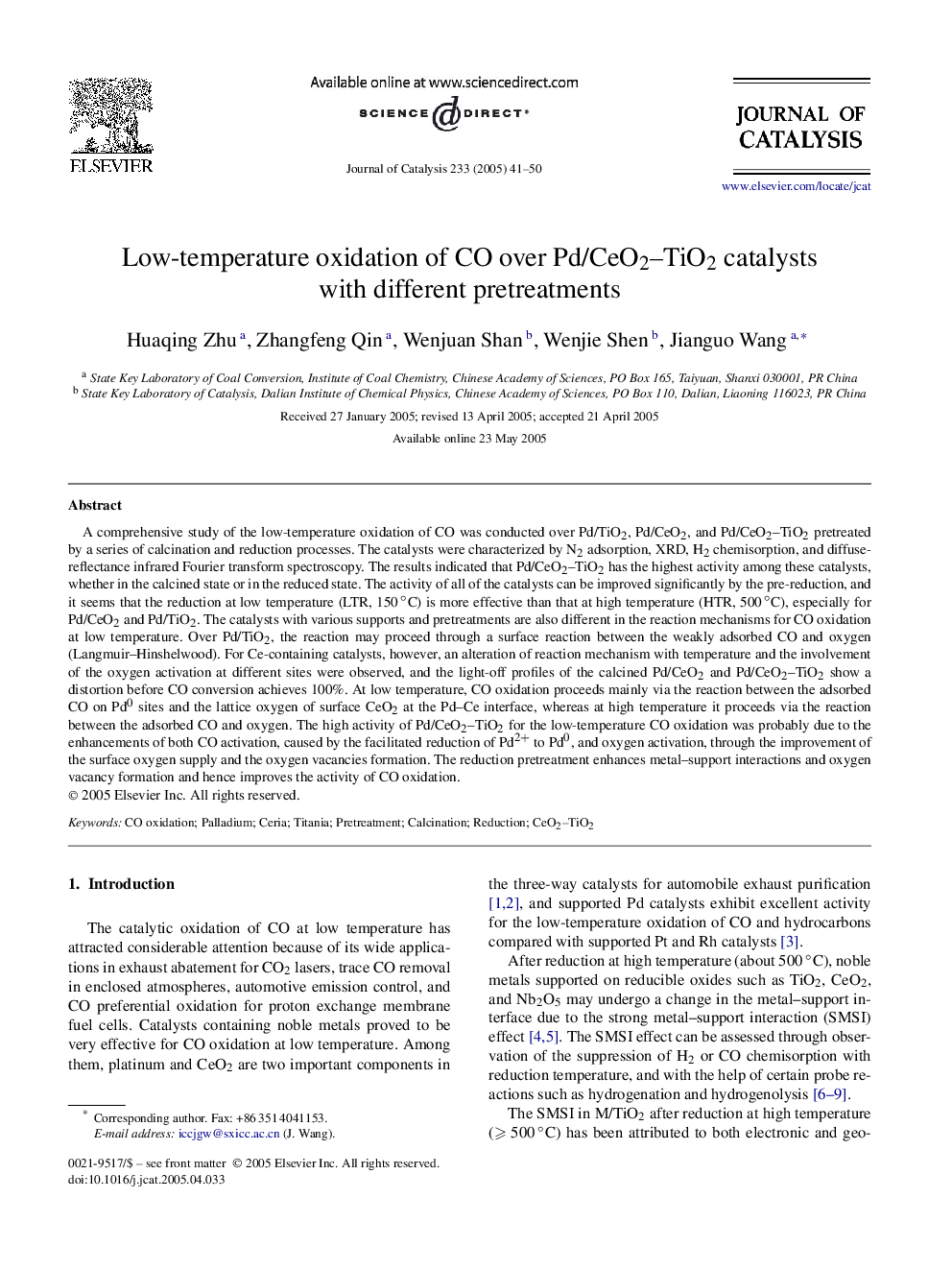| Article ID | Journal | Published Year | Pages | File Type |
|---|---|---|---|---|
| 10244772 | Journal of Catalysis | 2005 | 10 Pages |
Abstract
A comprehensive study of the low-temperature oxidation of CO was conducted over Pd/TiO2, Pd/CeO2, and Pd/CeO2-TiO2 pretreated by a series of calcination and reduction processes. The catalysts were characterized by N2 adsorption, XRD, H2 chemisorption, and diffuse-reflectance infrared Fourier transform spectroscopy. The results indicated that Pd/CeO2-TiO2 has the highest activity among these catalysts, whether in the calcined state or in the reduced state. The activity of all of the catalysts can be improved significantly by the pre-reduction, and it seems that the reduction at low temperature (LTR, 150â°C) is more effective than that at high temperature (HTR, 500â°C), especially for Pd/CeO2 and Pd/TiO2. The catalysts with various supports and pretreatments are also different in the reaction mechanisms for CO oxidation at low temperature. Over Pd/TiO2, the reaction may proceed through a surface reaction between the weakly adsorbed CO and oxygen (Langmuir-Hinshelwood). For Ce-containing catalysts, however, an alteration of reaction mechanism with temperature and the involvement of the oxygen activation at different sites were observed, and the light-off profiles of the calcined Pd/CeO2 and Pd/CeO2-TiO2 show a distortion before CO conversion achieves 100%. At low temperature, CO oxidation proceeds mainly via the reaction between the adsorbed CO on Pd0 sites and the lattice oxygen of surface CeO2 at the Pd-Ce interface, whereas at high temperature it proceeds via the reaction between the adsorbed CO and oxygen. The high activity of Pd/CeO2-TiO2 for the low-temperature CO oxidation was probably due to the enhancements of both CO activation, caused by the facilitated reduction of Pd2+ to Pd0, and oxygen activation, through the improvement of the surface oxygen supply and the oxygen vacancies formation. The reduction pretreatment enhances metal-support interactions and oxygen vacancy formation and hence improves the activity of CO oxidation.
Related Topics
Physical Sciences and Engineering
Chemical Engineering
Catalysis
Authors
Huaqing Zhu, Zhangfeng Qin, Wenjuan Shan, Wenjie Shen, Jianguo Wang,
